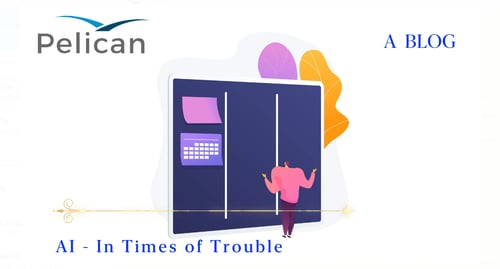By Colin Camp
With no certainty whether we are completely over COVID-19 or whether this or another virus will hit hard again, bank executives must plan for a ‘new normal’. A new normal without the reliance on teams of employees to perform many of the day-to-day activities and without the need for the required staff to always be stationed in the bank’s premises.
As executives of banks toasted the year of 2020 in around the world, their main concern for the coming year was how their banks could compete with the growing number of FinTechs and Digital or Challenger Banks which had encroached into their business, which had generally remained stable for decades and survived through various recent financial crises.
The oncoming of Open Banking was a danger lurking around the corner which could potentially splinter their business model even more and attract even more new players especially some of the major tech players. To defend against this rising wave of competition, banks had embarked on ‘digitisation’ transformation programs. Significant budgets had been allocated to present a digitised face to the end customer and to provide seamless, personalised, user experiences.
Not far into 2020, the unimaginable occurred which has completely rocked the world and challenged everyone personally and professionally. The Covid19 pandemic has forced countries to lock down, halt business and focus on personal health. Bank’s staff along with people from other industries have been forced to work from home. The drop of business volume and the uncertainty of the future has resulted in a significant dent in revenue which in turn has meant expenditure budgets having to be kept to a bare minimum.
As countries now (hopefully) get on top of the virus situation and governments stress the need for people and businesses to get back to normal - either partially or fully - to protect the economy, bank executives are now being faced with new challenges in looking at the future.
Despite significant investments being made on customer facing applications to present a modern digitised image, many of the tasks performed within the bank’s operations are still being undertaken manually by teams of bank resources. A significant number of vital activities, menial and skilled tasks, are carried out everyday in every bank by employees, who as the recent issues have shown may not be allowed to work in the bank’s offices and even worse may fall ill at any time with the virus.
With no certainty whether we are completely over this phase or whether this or another virus will hit hard again, bank executives must plan for a ‘new normal’. A new normal without the reliance on teams of employees to perform many of the day-to-day activities and without the need for the required staff to always be stationed in the bank’s premises.
The adoption of new technology that will help the bank overcome issues as seen recently will need to be fast tracked. For example, the need to deploy solutions that utilise artificial intelligence in middle and back office operations will move from ‘good-to-have’ to ‘must-have’ to guarantee against future crisis and events. Having technologies that can process data intelligently at anytime, anywhere with no danger of being impacted by sudden external factors will be vital to ensure the continuation of a bank’s operations.
Some areas where there has been significant traction and success in deploying such technologies are in the compliance domain where some banks are now using Artificial Intelligence, Natural Language Process and Machine Learning to streamline and improve their financial crime compliance screening for sanctions, fraud, transaction monitoring and money-laundering. Utilising intelligent AI applications not only improves the accuracy of the screening but also reduces the number of false positives that need to be investigated by compliance staff.
One of the banks’ core functions of payments processing is also an area that can require manual intervention and processing, especially for cross-border payments requiring exact formatting to ensure faster and cheaper processing. Having an AI tool to review payment instructions received from clients and counter parties and automatically repair them for more efficient straight through processing instead of having to be amended manually, provides not only the potential to reduce cost and time but also improves client service and satisfaction.
So, looking forward, in the same way that banks have duplicate hardware deployed at offsite disaster recovery centers to operate in case of an emergency, banks can no longer afford to have the potential point of failure by needing to rely on maintaining operational centers full of resources working every day. The use of technologies such as Artificial Intelligence gives the bank’s executive assurance that his operations can continue to run efficiently during times of trouble as we have witnessed recently.




